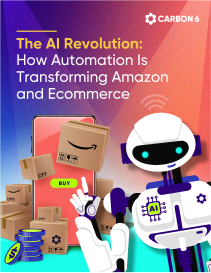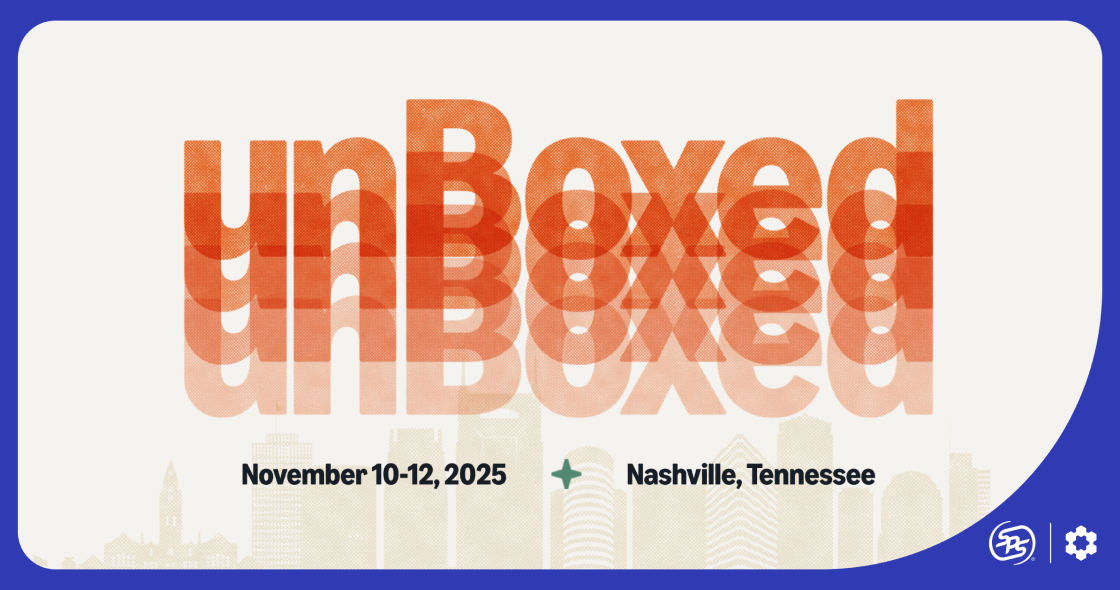Listen to This Article
Top Amazon Seller News This Week
In this week’s Amazon seller updates, we’re looking at two big changes: one that has Amazon’s AI incorporating external information for listings, and another that puts more of the prep work back on sellers.
- Amazon Starfish aims to become the world’s product authority: Starfish uses generative AI to create accurate, global product listings from external data. Paired with features like “Buy for Me,” Amazon is expanding beyond its own catalog to become the go-to source for product information everywhere. Sellers will need to curate their product listings both on and off of Amazon.
- Amazon ends FBA prep services, putting more responsibility on sellers: Starting January 1, 2026, Amazon will no longer provide prep or labeling services for FBA shipments, including inventory sent through AWD, AGL, SEND, and other channels. As Amazon expert Vanessa Hung points out in her LinkedIn post, Amazon is prioritizing faster fulfillment by offloading prep tasks entirely to sellers.
Whether you’re listing new products or managing inventory, these Amazon updates are a heads-up: more invasive AI automation on the front end, and greater responsibility on the fulfillment side.
Project Starfish: Amazon’s AI Play to Catalog the Internet
Starfish is Amazon’s multi-year generative AI initiative designed to synthesize data from external websites, images, and incomplete listings to generate accurate, detailed, and globally consistent product information. Its goal? To turn Amazon into the definitive source of product data for everything, a strategic move to compete directly with Google Shopping.
For Amazon sellers, this could be both a time-saver and a game-changer, but not without some implications worth watching.
How Does Starfish AI Work?
According to internal documents reported by Business Insider and Fox News, the newest Amazon GenAI project is already:
- Collecting data from 200,000+ external brand websites using web crawlers.
- Auto-filling product descriptions and rewriting titles, bullet points, and details.
- Supporting Amazon’s “Buy for Me” feature for cross-retailer purchases.
- Running A/B tests comparing AI-enhanced versus standard listings.
Starfish also builds on Amazon GenAI tools from previous years, which generate product images, suggest video ads, and enhance content at scale. The retailer estimates the project could boost Gross Merchandise Sales (GMS) by $7.5 billion in 2025 alone, a strong sign of the impact it could have on visibility and revenue.
For sellers, there are potential benefits. Starfish could dramatically reduce listing creation time and conversions. Tasks that took hours like writing copy, sourcing specs, creating visuals, may now happen in seconds through:
- Faster, automated listing creation from short inputs or even just a URL.
- Improved discoverability thanks to more complete and accurate product data.
- Higher conversion rates, as listings become more optimized and customer-friendly.
The opposite of all this could also be true in some instances.
Risks, Concerns, and Seller Implications
While the automation promises convenience, it also comes with some trade-offs.
- Data ownership concerns: Amazon is scraping product content from external sources, raising questions about how brand and third-party data is being used.
- Quality control: Relying on AI to auto-generate listings could result in inconsistencies or inaccurate content if not closely monitored.
- Less seller control: As Amazon fills in data automatically, sellers may have less influence over how their products are presented to shoppers.
To make the most of Starfish while avoiding potential pitfalls, here are a few tips:
- Audit your current listings: Identify gaps and inconsistencies in your existing content. If Amazon’s AI pulls from your site or your listings, make sure the info is accurate and up-to-date.
- Use AI-assisted tools, but review carefully: If Amazon offers auto-generated content for your listings, double-check it for accuracy and branding consistency.
- Optimize your external brand presence: If Amazon is scraping third-party sites, make sure yours are optimized and informative; it may become a source for your product’s future Amazon listing.
In sum, Amazon Project Starfish goes beyond backend improvements to revolutionize online product search. For sellers, it offers powerful new tools to save time and increase visibility, but also calls for a more proactive role in managing how your brand appears across Amazon’s ever-expanding ecosystem. The best move? Embrace the tech, but don’t let go of the wheel.

Unlock the future of ecommerce with our AI Revolution white paper. Discover how leading Amazon sellers leverage AI for personalization, product research, and advertising optimization. Download your free guide now and start integrating AI.
Amazon Hands FBA Prep & Labeling Back to Sellers
Starting January 1, 2026, Amazon will stop providing prep and labeling services for FBA shipments in the US. This includes inventory sent directly to fulfillment centers or routed through Amazon Warehousing & Distribution (AWD), Amazon Global Logistics (AGL), Shipping Expedited with Network Delivery (SEND), and the Supply Chain Portal (for Multi-Channel Fulfillment).
The company describes the move as part of its effort to improve delivery speed. However, many sellers and experts see it as a cost-cutting measure that leaves more responsibility in the hands of sellers.
Changes to Amazon FBA Prep Service
Amazon previously offered services like FNSKU labeling, polybagging, bubble wrapping, and other prep work. These will no longer be available. After January 1, all inventory must arrive fully prepped and labeled.
“Amazon doesn’t want to slow down fulfillment operations with tasks it considers your responsibility,” explains Amazon expert Vanessa Hung. This means:
- No more labeling or prep at Amazon fulfillment centers, even for AWD users. Sellers who previously relied on AWD to route unprepped inventory into the FBA network will now need to ensure all products are fully prepped before reaching AWD. This adds an extra layer of operational work and cost, especially for sellers who treated AWD and FBA as a hands-off logistics solution.
- No reimbursements for shipments damaged due to missing prep after Jan 1, 2026.
- Sellers must prep inventory themselves or work with their suppliers or a third-party logistics (3PL) provider.
Who’s Most Affected?
Many brand owners already manage prep at the manufacturing level, so this update won’t change much for them. But resellers and wholesale sellers, especially those who ship directly from distributors to Amazon, may need to adjust quickly.
“This is a colossal blow to resellers with already thin margins,” says Amazon seller consultant Jon Elder. For instance, Amazon’s $0.55 per unit FNSKU labeling fee was affordable compared to $1 or more charged by prep centers.
Sellers Now Carry More Risk
In the past, sellers could request Amazon FBA reimbursements if the retailer lost or damaged inventory during the prep process. Going forward, Amazon will no longer cover losses for shipments missing proper prep.
“This smells like a loophole to avoid paying for lost units,” says ecomm expert Noah Wickham. “(They) remove the service, blame the seller, keep the inventory. No reimbursement required.”
Discover and reclaim the funds Amazon owes you Seller Investigators. Our Amazon FBA reimbursements solution recovers hidden profits by identifying inventory losses, shipping errors, and refund discrepancies. Start your free audit now and see what you’re missing.
Why Is Amazon Ending FBA Prep Service?
Amazon says most sellers already handle their own prep or work with third-party FBA prep solutions. While ending these services allows the company to streamline its operations and move goods faster, community reactions have been mixed.
For those who leaned on Amazon’s hands-off support, this update adds new layers of complexity. It puts more pressure on sellers to maintain tight prep standards, with less room for error. That said, this could also be seen as a moment of opportunity: a chance for sellers to get ahead by strengthening backend systems or partnering with reliable 3PLs before the changes kick in come 2026.
What You Should Do Now
With less only 5 months left to prepare, here are some practical steps to take:
- Review how much you rely on Amazon’s prep services.
- Strengthen your prep workflow either by handling it in-house or outsourcing to a trusted 3PL.
- Look into Amazon’s Ships in Product Packaging (SIPP) program to reduce your prep needs.
- Ensure SKU compliance now. Starting in 2026, there will be no backup if mistakes are made.
- Add internal checks for labeling and packaging to avoid FBA check-in delays and lost units.
If your business depends on Amazon for prep and labeling, this change demands immediate attention. If you stay proactive, this is a chance to tighten up operations. For those who don’t, the consequences will show up in lost inventory, delays, and profit loss.
Other Amazon Seller Updates This Week
1. EPR Pay on Behalf Policy Update for UK, Spain, and France
Starting August 27, 2025, Amazon will unify its Extended Producer Responsibility (EPR) Pay on Behalf policies for the UK, Spain, and France into a single, streamlined policy. Key changes include potential fee reserves, variable fee charging schedules, and legally required data sharing with environmental organizations, all designed to simplify compliance and ensure timely payments to regulators.
2. Access UK FBA Fee Discounts with Amazon Recommended Packing Method
Sellers using FBA in the UK can now reduce fulfillment costs by following Amazon’s new recommended packing method during the inbound shipment process. When you use the “pack group” suggestions in the Send to Amazon workflow, and your shipment is validated, you’ll automatically receive fulfillment fee discounts within 30 days. This method is optional, and Amazon will show the expected discount before you commit.
3. AWS Launches New Tools and Investment to Advance AI Agents
At the AWS Summit New York 2025, Amazon announced major advancements in agentic AI, led by the launch of Bedrock AgentCore, a new framework for deploying secure, enterprise-scale AI agents. Additional updates include expanded AI listings in AWS Marketplace, enhanced customization options for Amazon Nova, and a $100 million investment to accelerate AI agent innovation through the Generative AI Innovation Center.
4. Amazon and Meta Enter the AI Wristband Race with Competing Visions
Amazon acquired Bee, the San Francisco-based startup behind a $50 AI-powered wristband that listens to conversations and converts them into summaries and reminders – a step toward deeper behavioral data collection. Similarly, Meta is developing neural wristbands that lets users control devices with subtle hand gestures, allowing those with motor impairments to better interact with computers. The wristband can even sense intent in movement. Both devices represent different approaches to wearable AI control.
Control the Chaos Before It Hits
Amazon’s two major updates (Project Starfish and the end of FBA prep services) aren’t just internal changes. They’re a preview of a more automated, faster, and less forgiving selling environment. To avoid getting left behind:
- Audit your listings now. Ensure your product data is accurate before Amazon’s AI starts auto-generating content.
- Claim control of your brand presence across your own site, Amazon and the internet. The data Amazon pulls will shape how your products are seen.
- Embrace AI tools, but always verify auto-generated content for accuracy, compliance, and brand tone.
- Prep like it’s 2026. Upgrade your workflow or partner with a solid 3PL before the grace period ends.
- Review SKUs for FBA compliance now to avoid check-in delays or lost or rejected inventory later.
- Use SIPP to reduce prep complexity and streamline fulfillment.
For nearly four years, we’ve kept sellers informed with our Amazon Sellers Newsletter, publishing over 200 issues packed with policy changes, announcements, and community events. Subscribe or share with your team to get these insights delivered weekly.








